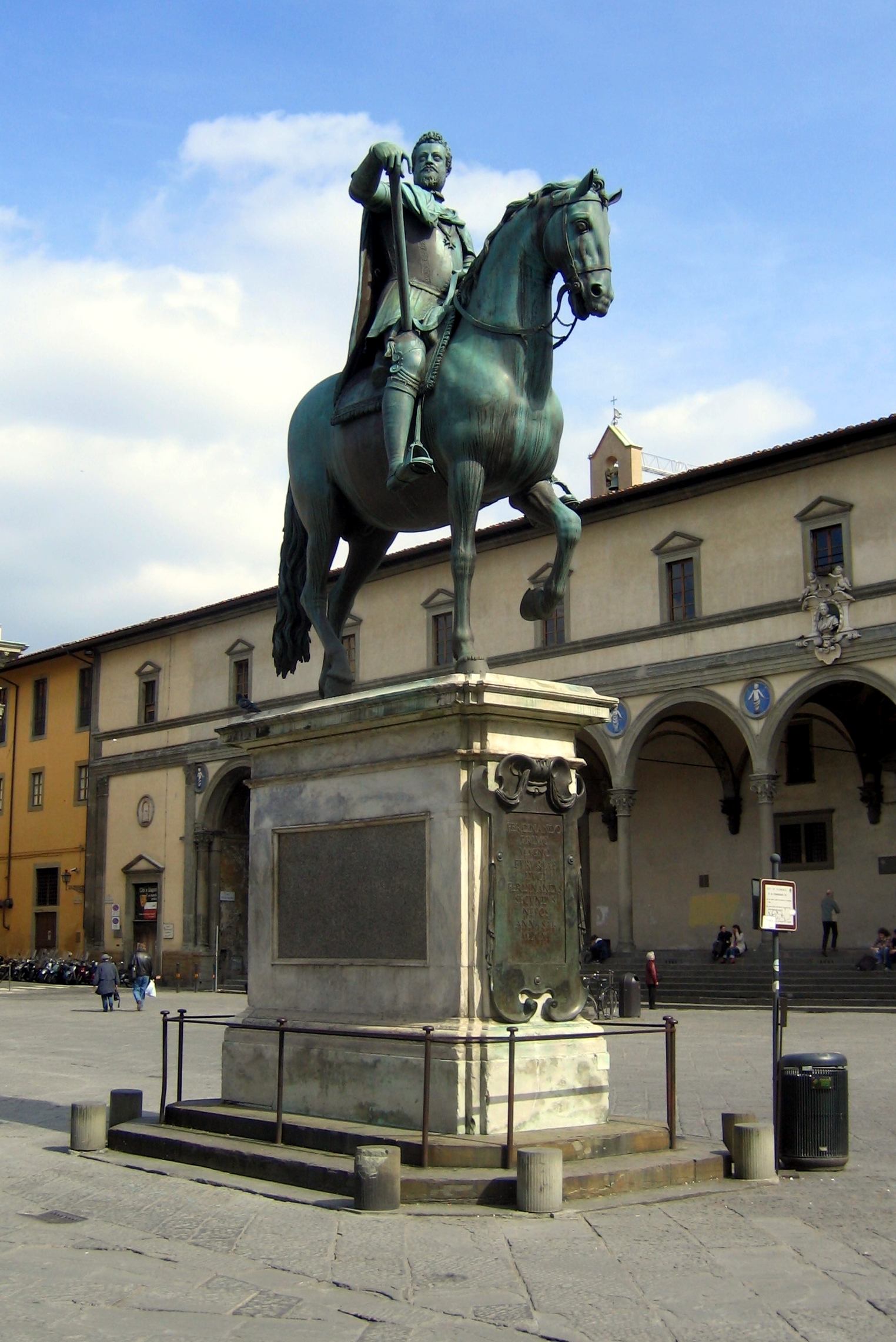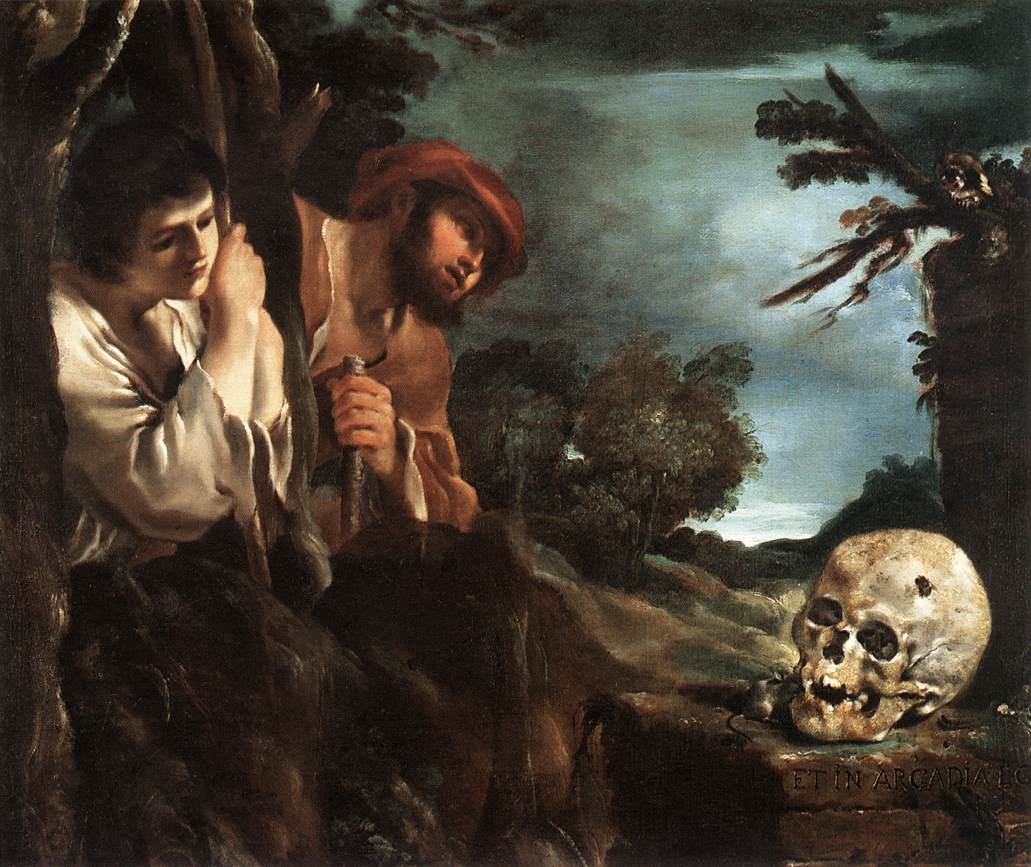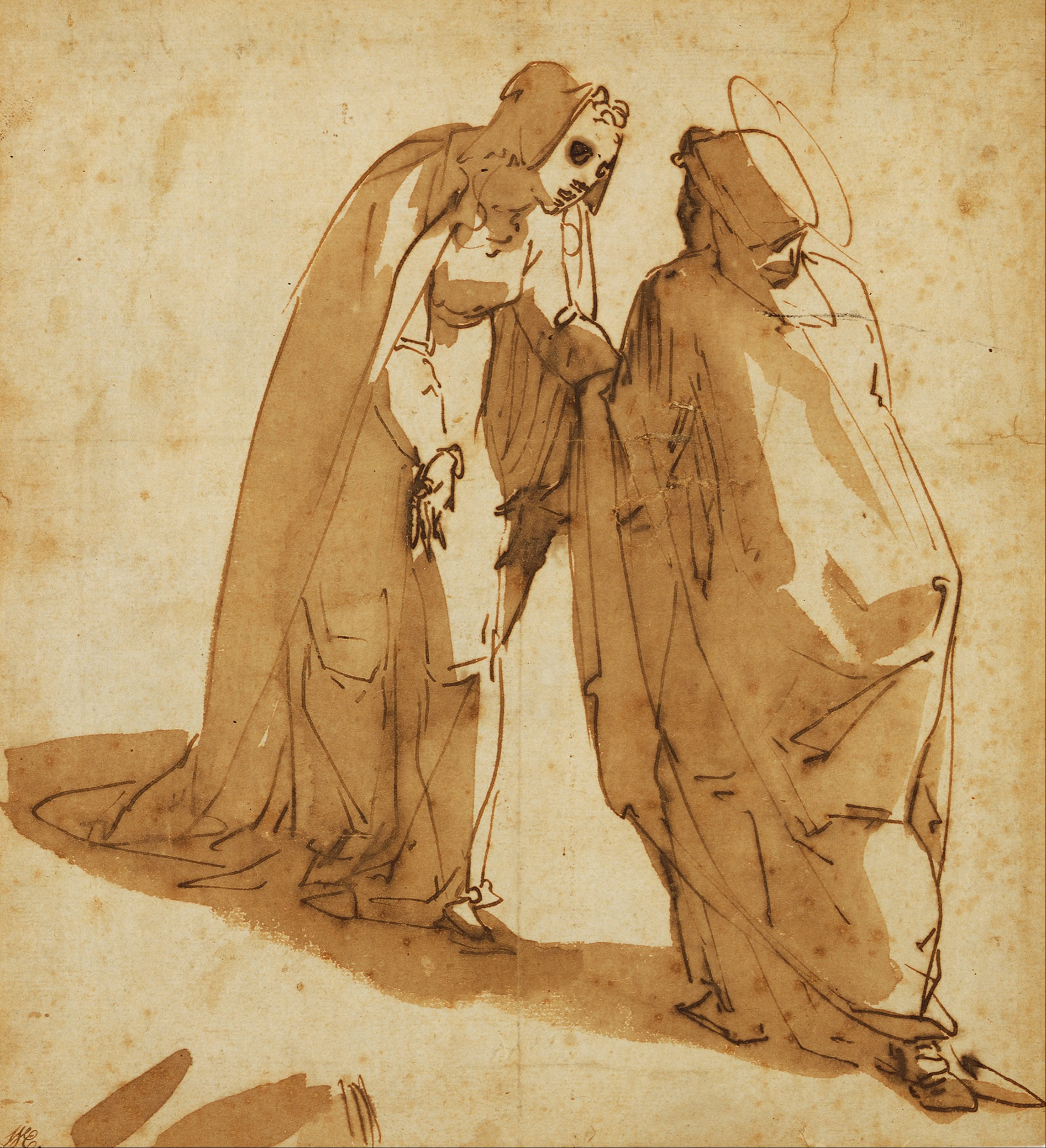|
Santa Maria Di Carignano
Santa Maria Assunta is a Renaissance church in Genoa, Italy. It is located in a residential sector called Carignano located on the hills just above the city center, thus the church is also known as ''Santa Maria Assunta di Carignano''. Structure and facade The church is on the Greek cross plan with four similar façades on each side. There are five domes and two squared-plan bell towers (four in the original design) at the Neoclassic main façade. The facade has two statues by Claude David. Interior decoration The interior is lavishly decorated by late Renaissance and Baroque artists. The four niches of the interior of the pylons of the dome have statues of ''Blessed Alessandro Sauli'' and ''St Sebastian'' (1668), (right) by Pierre Puget; and on the left, ''St Bartholomew'' (1695), by Claude David and ''St John the Baptist'' by Filippo Parodi. Along the walls, the statues of apostles and doctors of the church were completed by 1740 by Francesco Schiaffino. The altars alon ... [...More Info...] [...Related Items...] OR: [Wikipedia] [Google] [Baidu] |
Genoa
Genoa ( ; it, Genova ; lij, Zêna ). is the capital of the Italian region of Liguria and the List of cities in Italy, sixth-largest city in Italy. In 2015, 594,733 people lived within the city's administrative limits. As of the 2011 Italian census, the Province of Genoa, which in 2015 became the Metropolitan City of Genoa, had 855,834 resident persons. Over 1.5 million people live in the wider metropolitan area stretching along the Italian Riviera. On the Gulf of Genoa in the Ligurian Sea, Genoa has historically been one of the most important ports on the Mediterranean Sea, Mediterranean: it is currently the busiest in Italy and in the Mediterranean Sea and twelfth-busiest in the European Union. Genoa was the capital of Republic of Genoa, one of the most powerful maritime republics for over seven centuries, from the 11th century to 1797. Particularly from the 12th century to the 15th century, the city played a leading role in the commercial trade in Europe, becoming one o ... [...More Info...] [...Related Items...] OR: [Wikipedia] [Google] [Baidu] |
Paolo Gerolamo Piola
Paolo Gerolamo Piola (1666–1724) was an Italian painter of the Baroque period active mainly in Genoa. His father was the prominent Genoese painter Domenico Piola. Paolo Gerolamo was very active painting sacred subjects and frescoes. He was sent to study in Rome by his father, where he supposedly studied the work of Caracci, and studied under Carlo Maratta. Returning to Genoa, his father found his style ponderous. He was ultimately praised for his designs, and canvases for the church of Santa Maria di Carignano Santa Maria Assunta is a Renaissance church in Genoa, Italy. It is located in a residential sector called Carignano located on the hills just above the city center, thus the church is also known as ''Santa Maria Assunta di Carignano''. Structure a .... References 1666 births 1724 deaths 17th-century Italian painters Italian male painters 18th-century Italian painters Painters from Genoa Italian Baroque painters 18th-century Italian male artists {{It ... [...More Info...] [...Related Items...] OR: [Wikipedia] [Google] [Baidu] |
Renaissance Architecture In Liguria
The Renaissance ( , ) , from , with the same meanings. is a Periodization, period in History of Europe, European history marking the transition from the Middle Ages to modernity and covering the 15th and 16th centuries, characterized by an effort to revive and surpass ideas and achievements of classical antiquity. It occurred after the Crisis of the Late Middle Ages and was associated with great social change. In addition to the standard periodization, proponents of a "long Renaissance" may put its beginning in the 14th century and its end in the 17th century. The traditional view focuses more on the Early modern period, early modern aspects of the Renaissance and argues that it was a break from the past, but many historians today focus more on its medieval aspects and argue that it was an extension of the Middle Ages. However, the beginnings of the period – the early Renaissance of the 15th century and the Italian Italian Renaissance painting#Proto-Renaissance painting, Pr ... [...More Info...] [...Related Items...] OR: [Wikipedia] [Google] [Baidu] |
Basilica Churches In Genoa
In Ancient Roman architecture, a basilica is a large public building with multiple functions, typically built alongside the town's forum. The basilica was in the Latin West equivalent to a stoa in the Greek East. The building gave its name to the architectural form of the basilica. Originally, a basilica was an ancient Roman public building, where courts were held, as well as serving other official and public functions. Basilicas are typically rectangular buildings with a central nave flanked by two or more longitudinal aisles, with the roof at two levels, being higher in the centre over the nave to admit a clerestory and lower over the side-aisles. An apse at one end, or less frequently at both ends or on the side, usually contained the raised tribunal occupied by the Roman magistrates. The basilica was centrally located in every Roman town, usually adjacent to the forum and often opposite a temple in imperial-era forums. Basilicas were also built in private residences and i ... [...More Info...] [...Related Items...] OR: [Wikipedia] [Google] [Baidu] |
Pietro Tacca
Pietro Tacca (16 September 1577 – 26 October 1640) was an Italian sculptor, who was the chief pupil and follower of Giambologna. Tacca began in a Mannerist style and worked in the Baroque style during his maturity. Biography Born in Carrara, Tuscany, he joined Giambologna's atelier in 1592. Tacca took over the workshop of his master on the elder sculptor's death in 1608, finishing a number of Giambologna's incomplete projects, and succeeding him almost immediately as court sculptor to the Medici Grand Dukes of Tuscany. Like his master he took full advantage of the fashion among connoisseurs for table-top reductions of fine bronze sculptures. Louis XIV possessed Giambolognesque bronzes of ''Heracles and the Erymanthian Boar''and ''Heracles and the Cerynian Stag'(now Louvre Museum) that are now attributed to Tacca, and dated to the 1620s Tacca began by finishing Giambologna's equestrian bronze of Ferdinand de' Medici for the Basilica della Santissima Annunziata di Firenz ... [...More Info...] [...Related Items...] OR: [Wikipedia] [Google] [Baidu] |
Massimiliano Soldani
Massimiliano Soldani or Massimiliano Soldani Benzi (15 July 1656 – 23 February 1740) was an Italian baroque sculptor and medallist, mainly active in Florence. Born at Montevarchi, the son of a Tuscan cavalry captain, Soldani was employed by the Medici for his entire career.Klaus Lankheit, ''Florentinische Barockplastik'', 1962. Name He first went under the name ''Soldani'' but, claiming descent from the family of bishop Soldani of Fiesole and from the aristocratic Benzi family of Figline, he applied for and received, in 1693, an official letter acknowledging his nobility based on this ancestry. From this date forward, he called himself, and is referred to in many documents as, ''Soldani Benzi''. Life Soldani began training in the Medici drawing school in Florence. He attracted the attention of Grand Duke Cosimo III de' Medici who sent Soldani to his grand-ducal academy in Rome to study under Ciro Ferri and Ercole Ferrata, and to train in coining. During his years in Rome (1 ... [...More Info...] [...Related Items...] OR: [Wikipedia] [Google] [Baidu] |
Giuseppe Palmieri (painter)
Giuseppe Palmieri (1674 - May 18, 1740) was an Italian painter of the late Baroque period. Palmieri was born in Genoa. Orphaned as a baby, he came into the care of an uncle. As a boy, after his uncle died, he was apprenticed to an unidentified Tuscan painter, with whom he travelled through Italy, including a long stay in Sicily. Returning to Genoa, he joined the large studio of Domenico Piola, where he first gained independent commissions. He was very religious, and completed without pay some of his works for the monasteries of the Capuchin Friars (now mostly preserved in the church of the Holy Conception in Genoa). Some pictures depicting hunting scenes were painted for King John V of Portugal. In this style of painting, he was influenced by Castiglione. He fathered many children. He died in Genoa and was buried in the church of St. James of Carignano in Genoa. Works During his career Giuseppe Palmieri produced many works. Below is a list of some of his paintings: * ''S ... [...More Info...] [...Related Items...] OR: [Wikipedia] [Google] [Baidu] |
Guercino
Giovanni Francesco Barbieri (February 8, 1591 – December 22, 1666),Miller, 1964 better known as Guercino, or il Guercino , was an Italian Baroque painter and draftsman from Cento in the Emilia region, who was active in Rome and Bologna. The vigorous naturalism of his early manner contrasts with the classical equilibrium of his later works. His many drawings are noted for their luminosity and lively style. Biography Giovanni Francesco Barbieri was born into a family of peasant farmers in Cento, a town in the Po Valley mid-way between Bologna and Ferrara.Mahon, 1937a Being cross-eyed, at an early age he acquired the nickname by which he is universally known, Guercino (a diminutive of the Italian noun '' guercio'', meaning 'squinter').Turner, 2003 Mainly self-taught, at the age of 16, he worked as apprentice in the shop of Benedetto Gennari, a painter of the Bolognese School. An early commission was for the decoration with frescos (1615–1616) of Casa Pannini in Cento, wher ... [...More Info...] [...Related Items...] OR: [Wikipedia] [Google] [Baidu] |
Giulio Cesare Procaccini
Giulio Cesare Procaccini (1574–1625) was an Italian painter and sculptor of the early Baroque era in Milan. Biography Born in Bologna he was son of the Mannerist painter Ercole Procaccini the Elder and brother of Camillo Procaccini and Carlo Antonio Procaccini. The family moved to Milan around 1585 with the help of the rich art collector Pirro Visconti. He began as a sculptor in the Cathedral and in the Milanese church of Santa Maria presso San Celso. In 1610 he painted six of the '' Quadroni'', large canvases celebrating Saint Charles Borromeo. Among his many altarpieces are the ''Circumcision'' (c.1616) now in Galleria Estense, Modena, and the ''Last Supper'' (1616) for Convent associated with the Basilica della Santissima Annunziata del Vastato in Genoa. He also painted the '' Scourging of Christ''. In 1620 for the Church of Santa Maria di Canepanova in Pavia he painted two canvases depicting ''Debora who has the army gather'' and ''Rachel with Jacob'' at the we ... [...More Info...] [...Related Items...] OR: [Wikipedia] [Google] [Baidu] |
Luca Cambiaso
Luca Cambiaso (also known as Luca Cambiasi and Luca Cangiagio (being ''Cangiaxo'' the surname in Ligurian); 18 November 1527 – 6 September 1585) was an Italian painter and draughtsman and the leading artist in Genoa in the 16th century. He is considered the founder of the Genoese school who established the local tradition of historical fresco painting through his many decorations of Genoese churches and palaces. He produced a number of poetic night scenes. He was a prolific draughtsman who sometimes reduced figures to geometric (even cubic) forms.Lauro Magnani. "Cambiaso, Luca." Grove Art Online. Oxford Art Online. Oxford University Press. Web. 14 Mar. 2016 He was familiarly known as Lucchetto da Genova. Life Cambiaso was born in Moneglia, then part of the Republic of Genoa, the son of a painter named Giovanni Cambiaso. Cambiaso was precocious, and at the age of fifteen he painted, along with his father, some subjects from Ovid's ''Metamorphoses'' on the facade of a house i ... [...More Info...] [...Related Items...] OR: [Wikipedia] [Google] [Baidu] |
Domenico Fiasella
Domenico Fiasella (12 August 1589 – 19 October 1669) was an Italian painter of the Baroque period, mainly active in Genoa. He was nicknamed ''Il Sarzana'', after his birthplace. Biography He was born in c, the son of Giovanni Fiasella, a silversmith, who, noting his skills apprenticed him as a boy of 11 years to work with Aurelio Lomi in Genoa, and from there he moved to work with Giovanni Battista Paggi. Around 1607 he left for Rome, where he frequented the ''Accademia del Nudo''. His ability was first recognized by Guido Reni and Ciriaco Mattei, which led Domenico Passignano and Cavalier D'Arpino to employ him. The Marchese Vincenzo Giustiniani commissioned paintings from him, including ''Christ Healing the Blind'' and ''Christ Raising the Son of the Widow of Nain'' (both of which were ultimately purchased by John Ringling and bequeathed to the John and Mable Ringling Museum of Art upon his death). During his stay in Rome, he also completed ''The Flight into Egypt'' (now in ... [...More Info...] [...Related Items...] OR: [Wikipedia] [Google] [Baidu] |
Francesco Vanni
Francesco Vanni (1563 – 26 October 1610) was an Italian painter, draughtsman, printmaker, publisher and printer active in Rome and his native city of Siena.Francesco Vanni at the British Museum Biography Vanni was part of a family of painters, including his half-brother and stepfather , the latter of whom died when Francesco was young. As a 16-year-old, Vanni went first to , then to Rome. H ...[...More Info...] [...Related Items...] OR: [Wikipedia] [Google] [Baidu] |

_-_BEIC_6362186.jpg)






